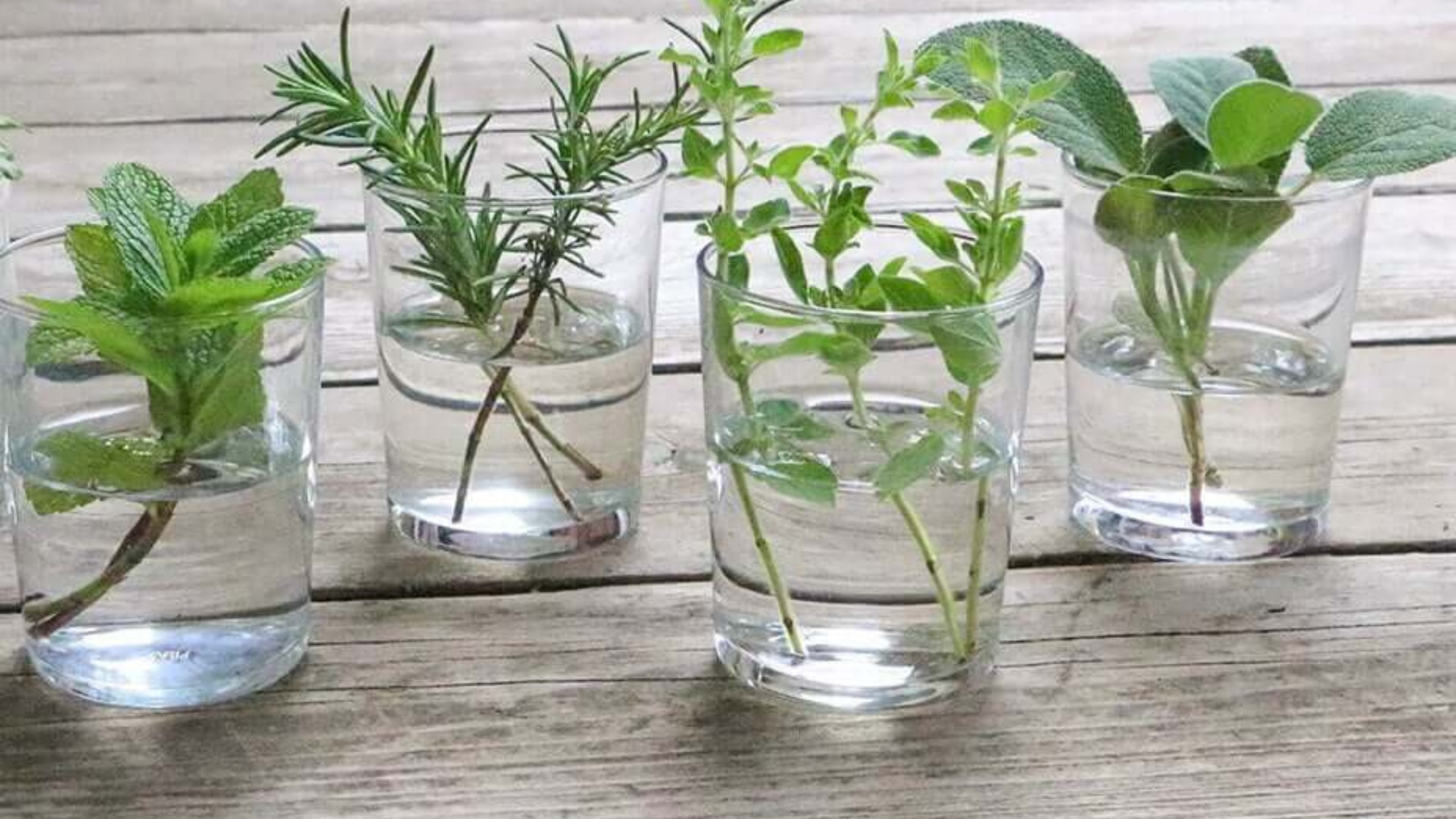If you’re eager to bring fresh flavors into your kitchen but lack outdoor space, you’ve come to the right place! Growing herbs in water is not only straightforward but also adds a touch of greenery to your home, enhancing both your cooking and your environment. In this article, we’ll delve into six herbs that flourish in water, providing you with tips on how to cultivate them effectively and the benefits they offer.
1. Mint
How to Grow
Mint is one of the simplest herbs to propagate. To start, select healthy stems and cut them just below a node (the point where leaves emerge from the stem). Place these cuttings in a jar or glass filled with water, making sure that at least one node is submerged.
Tips for Success
- Water Refresh: Change the water weekly to avoid bacteria build-up.
- Light Conditions: Mint loves bright light but keep it out of direct sunlight to prevent leaf scorching.
Benefits
Mint is refreshing and boasts digestive properties. It’s versatile, perfect for enhancing everything from teas to salads.

2. Parsley
How to Grow
Parsley is another favorite, known for its robust flavor and culinary versatility. To grow it in water, cut fresh parsley stems and place them in a glass or jar, ensuring the base is submerged in water.
Tips for Success
- Clean Water: Change the water every few days to maintain freshness.
- Temperature: Parsley thrives in moderate temperatures, ideally between 18°C and 21°C.

Benefits
Rich in vitamins and minerals, parsley is an excellent addition to both hot and cold dishes, elevating flavors significantly.
3. Rosemary
How to Grow
Although rosemary takes a little longer to develop roots in water, the wait is worthwhile. Cut rosemary stems and place them in a container with water, ensuring that the lower part of the stems is submerged.
Tips for Success
- Water Changes: Regularly change the water to support healthy root growth.
- Transplanting Opportunity: Once roots form, consider transplanting your rosemary into soil for further growth.
Benefits
Known for its distinct aroma and flavor, rosemary is also credited with antioxidant and anti-inflammatory properties.
4. Oregano
How to Grow
Oregano is an aromatic herb that adapts well to water cultivation. Cut stems and place them in water, where they usually root within one to two weeks.
Tips for Success
- Sunlight Needs: Oregano enjoys bright light, so place it in a sunny spot.
- Avoid Overwatering: While oregano can grow in water, it’s crucial not to leave it submerged for long periods. Change the water frequently to prevent mold.
Benefits
Oregano is known for its antimicrobial properties and is a staple in many Mediterranean dishes, making it a must-have in your kitchen.
5. Green Onion
How to Grow
Green onion, or scallion, is fantastic for water growth and sprouts quickly. Simply cut the roots of store-bought green onions and place them in a glass of water, ensuring that the roots are submerged while the green parts stick out.
Tips for Success
- Water Level: Keep enough water to cover the roots, but ensure the green tops are above the waterline for proper growth.
- Fertilizing: After a few weeks, add a diluted liquid fertilizer to enhance growth.
Benefits
Green onions not only enhance the flavor of many dishes but are also rich in vitamins A and C, adding nutritional value to your meals.
6. Thyme
How to Grow
Thyme is a wonderful herb that thrives in water with proper care. Select healthy stems and place them in a container with water, ensuring the bottom part of the stem is submerged.
Tips for Success
- Lighting: Ensure thyme receives good lighting by placing it near a sunny window.
- Regular Water Change: Like other herbs, change the water frequently to prevent impurities.
Benefits
Besides its culinary uses, thyme is known for antifungal and antioxidant properties, making it a healthy choice for your meals.
Final Thoughts
Growing herbs in water is a practical and accessible way to have fresh ingredients at your fingertips, even in small kitchens or spaces without outdoor gardens. Try these herbs and discover how this simple technique can transform your cooking, adding flavor and freshness to your dishes.
Are you ready to create your mini kitchen garden? Good luck, and enjoy the process of nurturing your herbs! Don’t hesitate to experiment and make adjustments as needed—each herb has its quirks, and adapting to your environment is part of the fun in gardening.
Bonus Tip
Feel free to mix and match your herbs, and enjoy trying out different combinations in your culinary creations! Whether you’re spicing up a dish or adding a garnish, freshly grown herbs can elevate your meals to a whole new level.
Happy gardening! 🌿✨


699266 532866I tried to submit a comment earlier, although it has not shown up. I will remember this. 995135
874671 916132Howdy! Would you mind if I share your weblog with my twitter group? Theres plenty of folks that I believe would really enjoy your content. Please let me know. Thanks 897558
https://t.me/s/officials_pokerdom/3698
https://t.me/s/be_1win/625